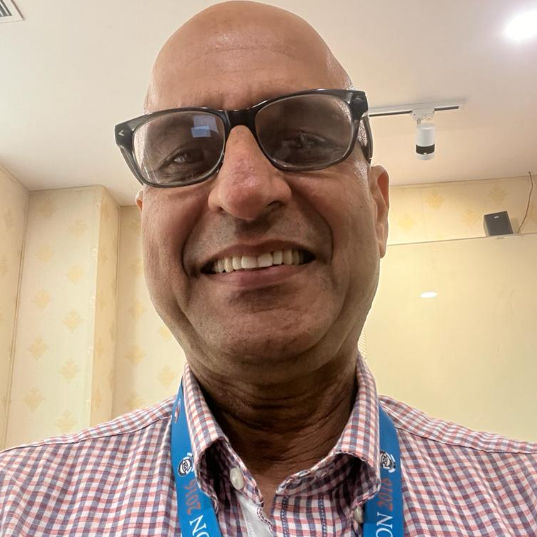Protect Your Eyes: Essential Tips for Remote Workers
Protect your eyes during remote work with ergonomic desk, blue light glasses, and 20-20-20 rule. Prevent digital eye strain and improve comfort while working remotely.

Written by Dr Sonia Bhatt
Last updated on 3rd Jul, 2025
Remote work often means spending long hours in front of the screens, resulting in digital eye strain. This condition is a result of discomfort or fatigue in the eyes, which arises when the eyes are subject to intense visual tasks. For remote workers, this strain, besides the extended exposure to the screen, is also a result of improper lighting, insufficient breaks, and incorrect posture. Since digital dependency is on the rise, individuals must be aware of the intricate details of this condition and its countermeasures to lead to a healthy life.
Symptoms of Digital Eye Strain
Knowing the early signs of the digital eye strain helps individuals to opt for its effective management. So, they can identify whether they are suffering from this condition or not through the following symptoms:
Dry or watery eyes
Blurred or double vision
Headache
Eye fatigue or heaviness
Neck and shoulder pain
Photophobia
Difficulty focusing on tasks
When to See a Doctor?
Most symptoms of digital eye strain are not dangerous. However, constant discomfort or worsening symptoms should prompt medical attention. If the symptoms hamper one’s work or any basic treatments do not improve, a visit to an eye specialist is advisable.
How to Set Up an Ergonomic Workspace?
Eye comfort is crucial when working remotely, so establishing an ergonomic workspace is critical. With the following changes in the environment, one can lessen physical discomfort and improve the quality of work:
Importance of Proper Lighting
Less glare on the screen is a sign of good lighting, which means it will not strain the eyes as you work. Do not use direct sources of light, as they are likely to reflect on the surface of choice. Ideally, you should position your desk close to the window to have natural light, but make sure your monitor is not directly exposed to the light. Additionally, the adjustable desk lamps solve the problem of glares.
Optimal Screen Positioning
Always angle your screen in a way that would not cause you neck problems, and ensure that you sit about 20-24 inches away from the screen so that you do not have to squint. Adjusting the top of the screen at a slightly upward position will help reduce glare and thus ease the strain of viewing it for a longer duration.
The Role of Anti-Glare Screens
Anti-glare screens are used to reduce the inevitable reflections and enhance concentration. Additionally, they create a better viewing experience especially when used in brightly lit areas during day or night. Individuals can also combine anti-glare screens with blue light filters to further alleviate the stress on their eyes.
Comfortable Chair and Desk Setup
A good chair with good back support is likely to help individuals maintain a correct posture. Moreover, their feet must touch the floor, and their arms must form a right angle when typing. Another primary ergonomic design is to recline the desk according to their eye level for a comfortable working position.
Implementing the 20-20-20 Rule
The 20-20-20 rule is one of the best ways to minimise eye strain during remote work. Doctors recommend that after every 20 minutes of work, one should focus on an object that is at least 20 feet away for 20 seconds. This break enables the eyes, which have been concentrating for a long time on a screen, to rest.
Furthermore, here are a few tips to help individuals stick to the 20-20-20 rule:
Set an alarm on the phone or computer after every 20 minutes.
Choose apps that will provide reminders that it is time for a break.
Write it up on a piece of paper and fix it somewhere in sight near the workstation.
Protective Eyewear and Accessories
There are dedicated eyewear and accessories that can actively help individuals take care of their eyes during the days of remote work. Here are the details:
Blue Light Blocking Glasses
Blue light-blocking glasses are worn to stop the unhealthy blue light from reaching the eyes. It helps in reducing eye strain and helps individuals to sleep properly. These glasses are mostly helpful if individuals work at night or in low-light conditions.
Anti-Reflective Lenses
Anti-reflective glasses reduce the effects of glare from side lights and help one focus. These lenses enhance vision and reduce the discomfort most felt when using screens for long hours.
Adjustable Monitor Stands and Holders
With adjustable stands, individuals can bend the screen to fit the most appropriate height, thus minimising eye and neck strain.
Screen Time Monitoring Tools
Screen time tracking apps monitor one’s device activities and alert him/her when it is time to take a break. These apps help regulate screen time as well as create healthy habits resulting in healthy eyes.
Healthy Habits for Eye Care
Taking some precautions is crucial to keep the eyes from straining. They are:
Regular Eye Exercises
Gazing at objects at various distances relieves tension and increases the flexibility of the eye muscles. When done correctly, these exercises help lower eye discomfort.
Hydration and Nutrition
Proper hydration and eating foods containing vitamins A, C, and E can protect the eyes and prevent eye strain. Healthy fatty acids such as omega-3 fatty acids are also important for eye health.
Getting Enough Sleep
Sleep is very important for the eyes to recover. Without adequate rest, the eyes tend to become more sensitive and likely to be damaged even when dried.
Reducing Screen Time Outside of Work
Try to avoid watching TV or using a computer after work by engaging in activities like reading or taking a walk. It helps the eyes to take a break and rejuvenate themselves.
The Impact of Screen Time on Sleep
Any form of screen time is most destructive when done right before bed because it interrupts the quality of sleep. Blue light affects the secretion of melatonin and therefore makes it difficult for people to sleep.
But there are ways to mitigate this by adhering to the following instructions:
Avoid using any form of screen one hour before bedtime
Always wear blue light-blocking glasses while working or turn on the gadget's eye-comfort filters.
Create a relaxing bedtime schedule by attempting to read a book or meditate before sleeping.
Consultations with Eye Care Professionals
To maintain long-term eye health individuals working remotely should go for regular checkups. Scheduled checkups help detect early signs of digital eye strain and other vision-related issues before they escalate. Based on the diagnosis, the doctors can prescribe tailored treatment plans that offer relief.
So, if you experience persistent symptoms like headaches, blurred vision, or dry eyes, discussing these with your optometrist ensures a targeted approach to effectively managing digital eye strain.
Emerging Technology and Eye Protection
New technology is also enhancing the eye protection of remote workers. Some of them are:
Eye Protection Tech
Combining blue light filtering and adaptive lenses into a pair of smart eyewear reduces the impact of digital strain. Smartwatches that monitor the amount of time spent at a screen and prompt the user to look away from the screen are now more and more used to reduce eye strain.
Apps and Software Solutions
There are apps to track how long individuals spend on the screen and notify them when it is time to take a break. Some also offer blue light filters where the brightness of the screen can be changed to reduce eye strain.
Conclusion
The eyes are more than just a medium of vision; they are instruments for enjoying the wonders of the world. While the demands of the job are something that every professional adheres to, it is equally important for them to take care of their eyes. In this regard, they can implement some basic lifestyle and dietary changes and use advanced tools like blue-light filter spectacles, glare-free screens, etc., to ensure their eyes are well-protected. Practising these preventive measures improves their eye health over time and creates a comfortable working environment for remote working.
Consult Top Ophthalmologists
Consult Top Ophthalmologists
Dr. S Venkateswaran
Ophthalmologist
35 Years • MBBS, PGD (OPTHALMOLOGY)
Tiruvannamalai
Shiva Eye And General Hospital, Tiruvannamalai

Dr. Jyoti Dhaka
Ophthalmologist
9 Years • MBBS, Dip in (OPHTHALMOLOGY),DNB (OPHTHALMOLOGY)
Jhujhunu
Dr.Jyoti Dhaka Eye Clinic, Jhujhunu
(25+ Patients)

Dr. Umang Thakkar
Ophthalmologist
2 Years • MBBS,MS OPHTHALMOLOGY
Rajkot
Shree Ramkrishna Eye Hospital, Rajkot

Dr. Syed Saifullah Bokhari
Ophthalmologist
4 Years • MBBS, MS(Ophthalmology)
Bengaluru
Vasan Eye Care, Bengaluru

Dr Rajesh Rastogi
Ophthalmologist
33 Years • MBBS, MS Ophthalmology
New Delhi
Rotary Diabetic Centre, New Delhi
